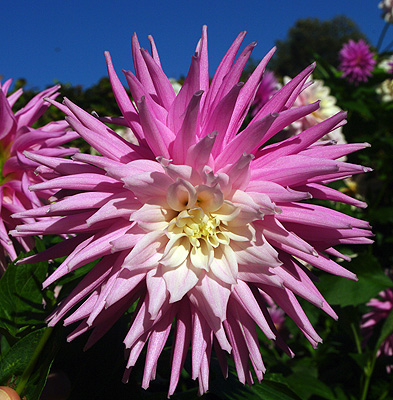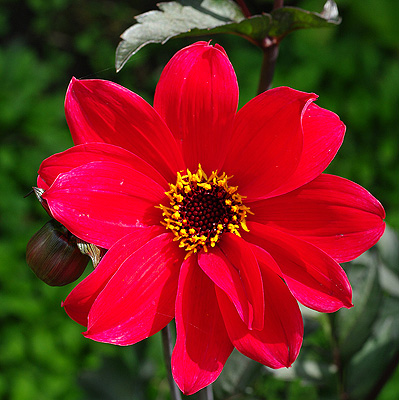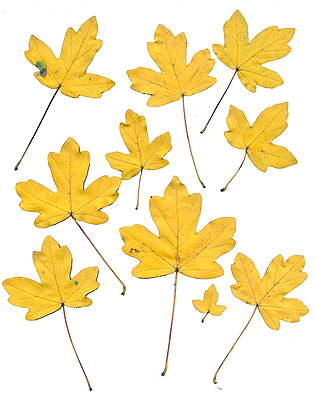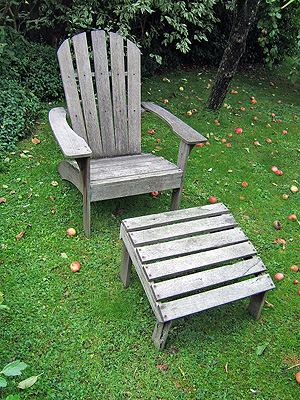The Garden in September
Jobs and Tips
plants
for September
From John Keats - To Autumn.
September is the best month for Dahlias, support them with canes and give them the space they need to get the most from them
Jobs / Tips
![]() Tidy the garden. This helps to reduce the amount
of hiding places and food that slugs and snails in particular
will have to tide them over the winter, which is good news for
you next year. Don't be too enthusiastic though, some plant
seed heads can look good through the winter, particularly of
ornamental grasses.
Tidy the garden. This helps to reduce the amount
of hiding places and food that slugs and snails in particular
will have to tide them over the winter, which is good news for
you next year. Don't be too enthusiastic though, some plant
seed heads can look good through the winter, particularly of
ornamental grasses.
![]() If your plants have been affected by disease or pest
pay particular attention to tidy-up hygiene so as not to
give them (the diseases and pests) a head start next year. Diseased
leaves should be burnt or taken out of the garden and disposed
of, likewise fruit that is damaged by apple scab, plum sawfly
or anything similar. The pest or disease needs the host tree
and they do what they can to make sure they hang around it through
the winter to feed on it again next year.
If your plants have been affected by disease or pest
pay particular attention to tidy-up hygiene so as not to
give them (the diseases and pests) a head start next year. Diseased
leaves should be burnt or taken out of the garden and disposed
of, likewise fruit that is damaged by apple scab, plum sawfly
or anything similar. The pest or disease needs the host tree
and they do what they can to make sure they hang around it through
the winter to feed on it again next year.
![]() Just enough time to prune any plum and
cherry trees you
have as soon as possible. The problem with plums (and
all the Prunus) is that you're supposed to prune them
in the summer, any other time means they're at risk from developing
"silver leaf" a fungal infection that can easily kill the whole
tree. If you do prune in summer then you lose the fruit on your
pruned branches, not to mention what you would knock off adjacent
branches as the pruned wood fell. A good compromise is to prune
immediately the years crop has been picked, not quite high summer,
but enough to keep the tree reasonably safe.
Just enough time to prune any plum and
cherry trees you
have as soon as possible. The problem with plums (and
all the Prunus) is that you're supposed to prune them
in the summer, any other time means they're at risk from developing
"silver leaf" a fungal infection that can easily kill the whole
tree. If you do prune in summer then you lose the fruit on your
pruned branches, not to mention what you would knock off adjacent
branches as the pruned wood fell. A good compromise is to prune
immediately the years crop has been picked, not quite high summer,
but enough to keep the tree reasonably safe.
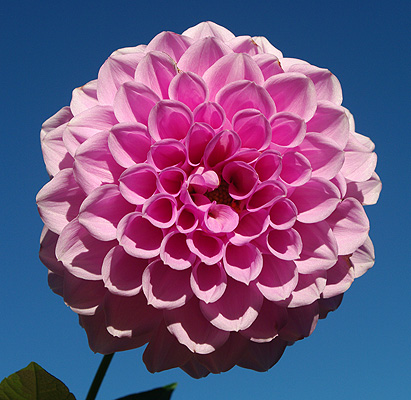
![]() Scour the retail outlets for summer plant bargains.
The end of the year is the best time for new plantings,
the soil is still warm and there's time for plants to get established
before the winter. At the same time drought and being baked
by the sun is much less likely so new introductions don't need
the fussing over that they may do at other times of the year.
Come the spring they're all ready in place and ready to perform
as best they can with minimal intervention from you.
Scour the retail outlets for summer plant bargains.
The end of the year is the best time for new plantings,
the soil is still warm and there's time for plants to get established
before the winter. At the same time drought and being baked
by the sun is much less likely so new introductions don't need
the fussing over that they may do at other times of the year.
Come the spring they're all ready in place and ready to perform
as best they can with minimal intervention from you.
Shrubs and perennials that have sat in nurseries and garden centres all summer have been growing strongly in good conditions and are now large and vigorous. They pose a problem for the retailer in that they will need potting on to ensure they remain healthy, in the main, if the plants are not sold they will end up on the compost heap or in the skip. So this becomes a good time of year to buy and plant new introductions to the garden.
![]() Sow hardy annuals for early flowering next spring.
Calendulas, Larkspur, Nigella (love in a mist) Shirley poppies
and my favourite blue cornflowers all do well if sown in rows
in a sheltered position. Don't bother with the "broadcast" method
of sowing as often advised for hardy annuals, the additional
individual attention of short rows drawn in the soil with a
stick, seed sown thinly and then covered properly and watered
in is much more successful. The rows don't need to be straight
or aligned, as long as the seeds aren't left so much to their
own devices.
Sow hardy annuals for early flowering next spring.
Calendulas, Larkspur, Nigella (love in a mist) Shirley poppies
and my favourite blue cornflowers all do well if sown in rows
in a sheltered position. Don't bother with the "broadcast" method
of sowing as often advised for hardy annuals, the additional
individual attention of short rows drawn in the soil with a
stick, seed sown thinly and then covered properly and watered
in is much more successful. The rows don't need to be straight
or aligned, as long as the seeds aren't left so much to their
own devices.
![]() Plant spring flowering bulbs for next year. Plant
hyacinths in tall containers for the best results indoors (not
shallow bowls, the more the roots reach down, the more the flowers
reach up so it seems). Lily flowered tulips are extravagant,
but fantastic and only very rarely found as potted bulbs in
the way that Hyacinths and Daffodils are. buy:
crocus,
daffodils and narcissi,
hyacinths,
tulips
Plant spring flowering bulbs for next year. Plant
hyacinths in tall containers for the best results indoors (not
shallow bowls, the more the roots reach down, the more the flowers
reach up so it seems). Lily flowered tulips are extravagant,
but fantastic and only very rarely found as potted bulbs in
the way that Hyacinths and Daffodils are. buy:
crocus,
daffodils and narcissi,
hyacinths,
tulips
![]() Detach strawberry runners and plant them out in well
dug over and manured soil. You can get huge amounts of free
plants if you've grown any strawberries. If you're not ready
to plant them out, then place each little plantlet in a space
of its own in a small pot or several in a seed tray and they'll
soon root and be ready to plant out later. It's also a good
way of getting extra plants to give away to friends and neighbours
which is always one of the nice things about gardening.
Detach strawberry runners and plant them out in well
dug over and manured soil. You can get huge amounts of free
plants if you've grown any strawberries. If you're not ready
to plant them out, then place each little plantlet in a space
of its own in a small pot or several in a seed tray and they'll
soon root and be ready to plant out later. It's also a good
way of getting extra plants to give away to friends and neighbours
which is always one of the nice things about gardening.
![]() A good time to make a new lawn or repair and
existing one using
seed or turf.
if you've put it off over the summer (or for even longer). The
cooler but still reasonable temperatures and more reliable rainfall
at this time of year mean that it is one of the best times to
do this.
A good time to make a new lawn or repair and
existing one using
seed or turf.
if you've put it off over the summer (or for even longer). The
cooler but still reasonable temperatures and more reliable rainfall
at this time of year mean that it is one of the best times to
do this.
![]() If you have any half hardy plants such as fuchsias
or Pelargoniums watch out for cold weather and frosts that may
kill them off, they need to over-winter in frost free conditions
if they are to survive the winter. It's a good idea to take
cuttings in a protected place as an insurance policy.
If you have any half hardy plants such as fuchsias
or Pelargoniums watch out for cold weather and frosts that may
kill them off, they need to over-winter in frost free conditions
if they are to survive the winter. It's a good idea to take
cuttings in a protected place as an insurance policy.
![]() Sow the seeds of any perennials or shrubs as soon
as they're ripe. If you collect your own seed from existing
plants, then sow them when nature intended them to be sown.
They might not always germinate straight away, so keep them
somewhere sheltered from too much rain and sun and they will
do in time.
Sow the seeds of any perennials or shrubs as soon
as they're ripe. If you collect your own seed from existing
plants, then sow them when nature intended them to be sown.
They might not always germinate straight away, so keep them
somewhere sheltered from too much rain and sun and they will
do in time.
![]() In the 19th Century, Devon girls would go "crabbing
for husbands". Crab apples, gathered on 29th September (Michaelmas
Day) would be arranged in the shape of the prospective lover's
initials. Those best preserved on Old Michaelmas Day (10th October),
were thought to indicate the best prospects.
In the 19th Century, Devon girls would go "crabbing
for husbands". Crab apples, gathered on 29th September (Michaelmas
Day) would be arranged in the shape of the prospective lover's
initials. Those best preserved on Old Michaelmas Day (10th October),
were thought to indicate the best prospects.
Copyright 2000 - present. All Rights Reserved | Privacy Policy Statement

